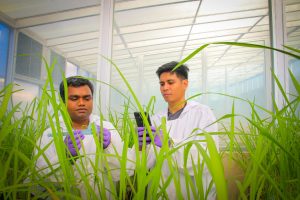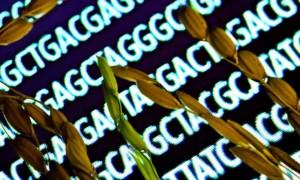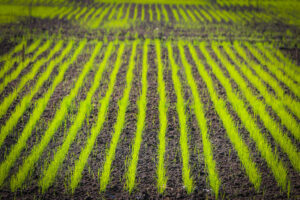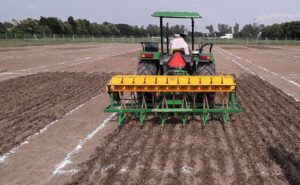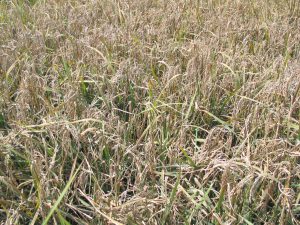The simple answer to the question posed by the title is “no”— because most rice is not dangerous. On closer inspection, though, we find that some rice-cropping systems are more likely than others to take up metals that are toxic to humans. Such metals may be a natural part of the local environment or present in industrial pollution.
Who is most at risk from contaminated rice? Nutritionally deficient people are more likely than well-nourished people to experience harmful effects from eating rice containing higher than-average levels of metals. As the most impoverished people are the most likely to be malnourished, they too are the most vulnerable.
Which metals are dangerous? The risk of long-term exposure to low levels of metals is difficult to confirm. All of the potentially toxic metals are naturally present in the environment in trace amounts and are ingested with food, water, and air. Human bodies have the ability to deal with these background levels. The World Health Organization has established guidelines on allowable consumption of various toxins.
How important is food in exposure to metals? Some toxic metals, such as chromium, mercury, and lead, are considered very low risk as plant food contaminants because plants can’t absorb them. Other metals, such as copper and zinc, are needed in small quantities by plants and humans, and become toxic to plants before they reach high enough concentrations to be toxic to humans. The metals that pose the biggest risk are those that chemically mimic plant nutrients and can therefore be absorbed by plants at high enough concentrations to threaten human consumers.
Is rice riskier than other food? Arsenic is of more concern in rice than in other grain crops because flooded soil conditions make arsenate, which mimics the plant nutrient phosphate, more available to plants. However, far more arsenic accumulates in leaves than in grain, and experiments have so far failed to measure arsenic concentrations above published safe limits in rice grain, even in very contaminated soil.
Sources of arsenic contamination in rice fields include geologic soil materials that are naturally high in arsenic, irrigation with contaminated water, residual arsenical pesticides used on cotton, or application of poultry manure from chickens treated with arsenical antiparasite food additives. In Bangladesh, which has widespread geologic arsenic contamination, the many documented cases of arsenic poisoning have been caused by consumption of contaminated drinking water, not food.
Cadmium, which chemically mimics the plant micronutrient zinc, is less likely to be found in rice grain than in other grains because it is less available to plants under flooded conditions. However, because cadmium is very toxic, it is important to monitor any effects that trends in rice production may have on grain cadmium content. In water-scarce areas, for example, water-saving irrigation strategies may increase cadmium uptake. Sources of cadmium in rice fields include urban sewage sludge applied to soil, runoff from mining operations, and, to a much lesser extent, phosphate fertilizer.
What are scientists doing? Researchers have a four-pronged approach to minimizing the content of metals in rice grains: identifying which geographical areas have elevated risk and testing soil and plant samples; identifying the rice varieties that take up the least metal or convert the toxin to less toxic forms when grown in high-risk areas; developing irrigation, fertilization, and residue management strategies that help to minimize metal uptake by plants; and recommending growth of nonrice crops where the risk is too high for rice.
What can farmers do? Farmers who think their farm may be in a high-risk category should contact their local extension office and arrange to have soil and grain samples tested. If a contaminant is present, there may be a recommended approach for their area—more suitable varieties or irrigation techniques, for example.
What can policymakers do? As well as determining allowable levels of contaminants in food, policymakers can implement food and soil-testing programs in suspected risk areas, monitor land use and cleanup of contaminated sites, and build capacity for monitoring and solving contamination problems.
How do I know my rice is safe? Most people are extremely unlikely to consume sufficient contaminated rice to cause health problems. The people most at risk are those who live on contaminated sites and eat primarily the rice produced on their own land, those who have additional sources of contamination besides rice, and those who are nutritionally deficient. Many of these people do not have access to the necessary information. It is our job to identify and inform them.
_________________________________________
Sarah Johnson is a soil scientist in IRRI’s Crop and Environmental Sciences Division.


